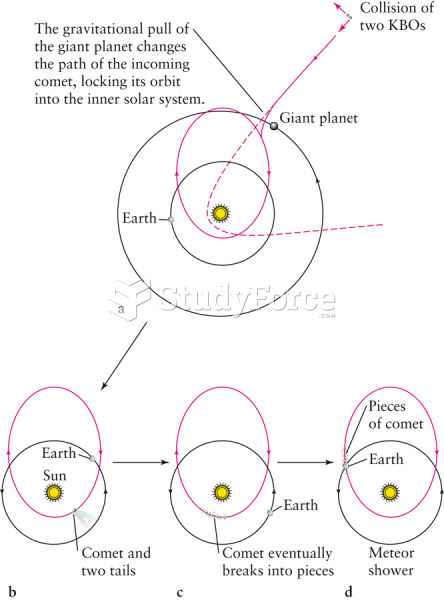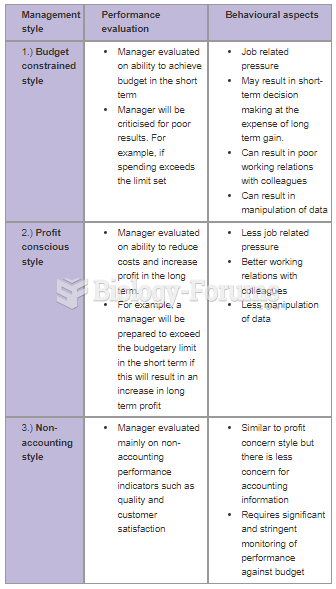Answer to Question 1
T
Answer to Question 2
1a. Actual selling price = 79.00
Budgeted selling price = 78.00
Actual sales volume = 7,300 units
Selling price variance = (Actual sales price Budgeted sales price) Actual sales volume
= (79 78) 7,300 = 7,300 Favorable
1b. Development of Flexible Budget
Budgeted Unit
Amounts Actual Volume Flexible Budget
Amount
Revenues 78.00 7,300 569,400
Variable costs
DMFrames 2.30/oz. 2.00 oz. 4.60a 7,300 33,580
DMLenses 3.10/oz. 4.00 oz. 12.40b 7,300 90,520
Direct manuf. labor 18.00/hr. 1.00 hrs. 18.00c 7,300 131,400
Total variable manufacturing costs 255,500
Fixed manufacturing costs 114,000
Total manufacturing costs 369,500
Gross margin 199,900
a35,880 7,800 units; b96,720 7,800 units; c140,400 7,800 units
Actual
Results
(1) Flexible-
Budget
Variances
(2) = (1) (3)
Flexible
Budget
(3) Sales -
Volume
Variance
(4) = (3) (5)
Static
Budget
(5)
Units sold 7,300 7,300 7,800
Revenues 576,700 7,300 F 569,400 39,000 U 608,400
Variable costs
DMFrames 70,800 36,500 U 33,580 2,300 F 35,880
DMLenses 131,400 40,880 U 90,520 6,200 F 96,720
Direct manuf. labor 145,124 13,724 U 131,400 9,000 F 140,400
Total variable costs 346,604 91,104 U 255,500 17,500 F 273,000
Fixed manuf. Costs 111,000 3,000 F 114,000 0 114,000
Total costs 457,604 88,104 U 369,500 17,500 F 387,000
Gross margin 119,096 80,804 U 199,900 21,500 U 221,400
Level 2 80,804 U 21,500 U
Flexible-budget variance Sales-volume variance
Level 1 102,304 U
Static-budget variance
1c. Price and Efficiency Variances
DMFramesActual ounces used = 4.00 per unit 7,300 units = 29,200 oz.
Price per oz. = 70,080 29,200 = 2.40
DMLensesActual ounces used = 6.00 per unit 7,300 units = 43,800 oz.
Price per oz. = 131,400 43,800 = 3.00
Direct LaborActual labor hours = 145,124 14.20 = 10,220 hours
Labor hours per unit = 10,220 7,300 units = 1.40 hours per unit
Actual Costs
Incurred
(Actual Input Qty.
Actual Price)
(1)
Actual Input Qty.
Budgeted Price
(2) Flexible Budget
(Budgeted Input
Qty. Allowed for
Actual Output
Budgeted Price)
(3)
Direct
Materials:
Frames (7,300 4 2.40)
70,080 (7,300 4 2.30)
67,160 (7,300 2.00 2.30)
33,580
2,920 U 33,580 U
Price variance Efficiency variance
Direct
Materials:
Lenses (7,300 6.0 3.00)
131,400 (7,300 6.0 3.10)
135,780 (7,300 4.00 3.10)
90,520
4,380 F 45,260 U
Price variance Efficiency variance
Direct
Manuf.
Labor (7,300 1.40 14.20)
145,124 (7,300 1.40 18.00)
183,960 (7,300 1.00 18.00)
131,400
38,836 F 52,560 U
Price variance Efficiency variance
2. Possible explanations for the price variances are
(a) unexpected outcomes from purchasing and labor negotiations during the year.
(b) higher quality of frames and/or lower quality of lenses purchased.
(c) standards set incorrectly at the start of the year.
Possible explanations for the uniformly unfavorable efficiency variances are
(a) substantially higher usage of lenses due to poor-quality lenses purchased at lower price.
(b) lesser trained workers hired at lower rates result in higher materials usage (for both frames and lenses), as well as lower levels of labor efficiency.
(c) standards set incorrectly at the start of the year.







